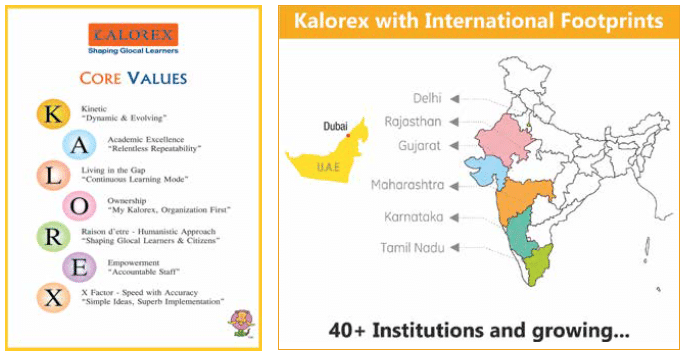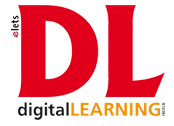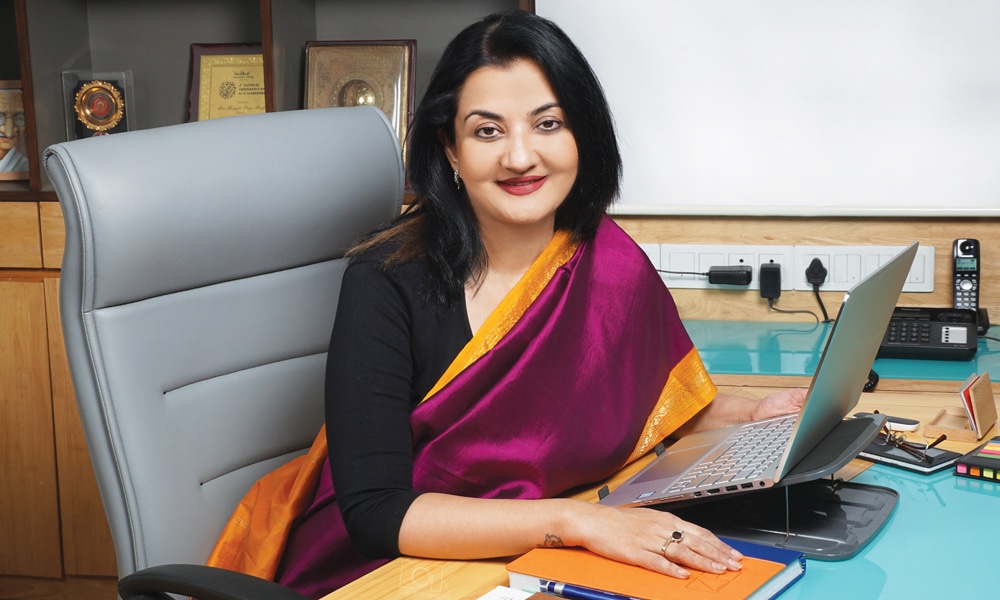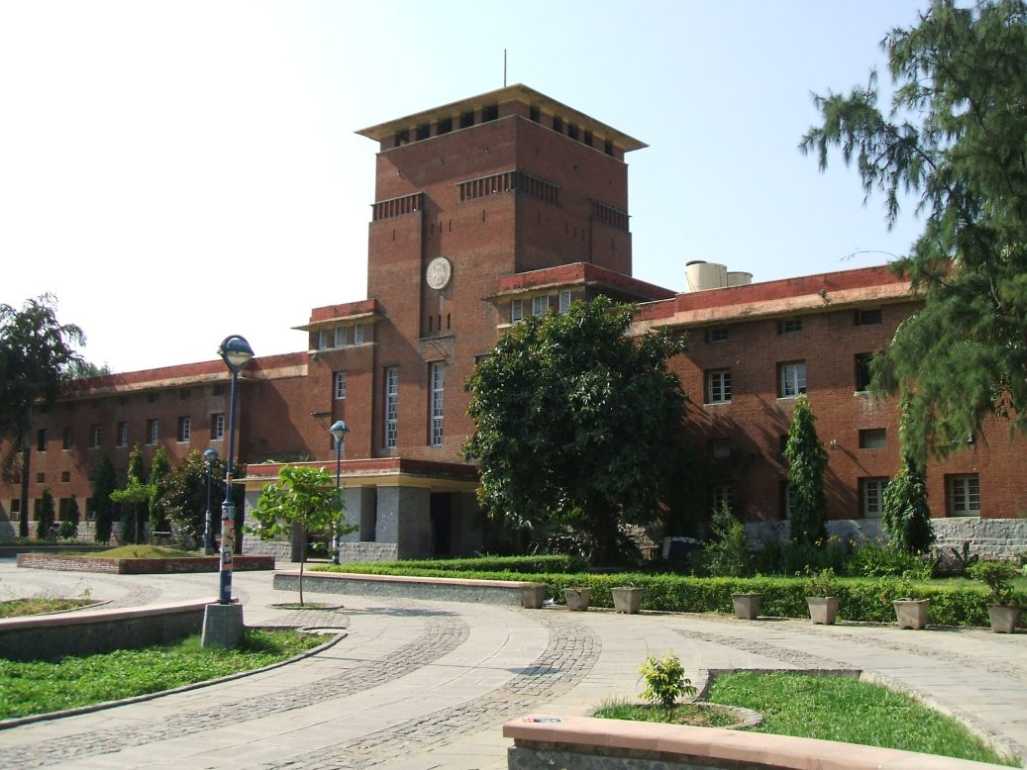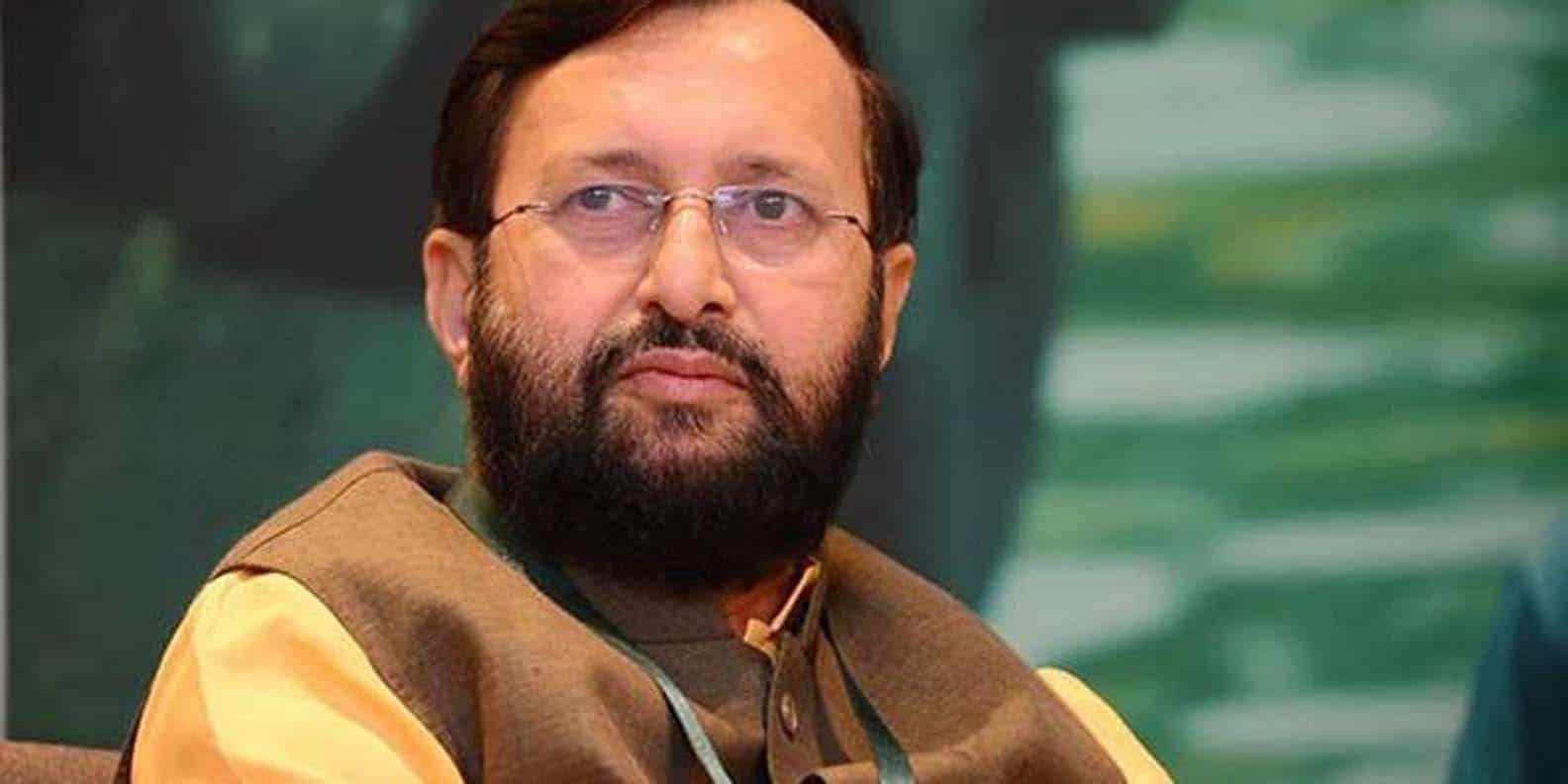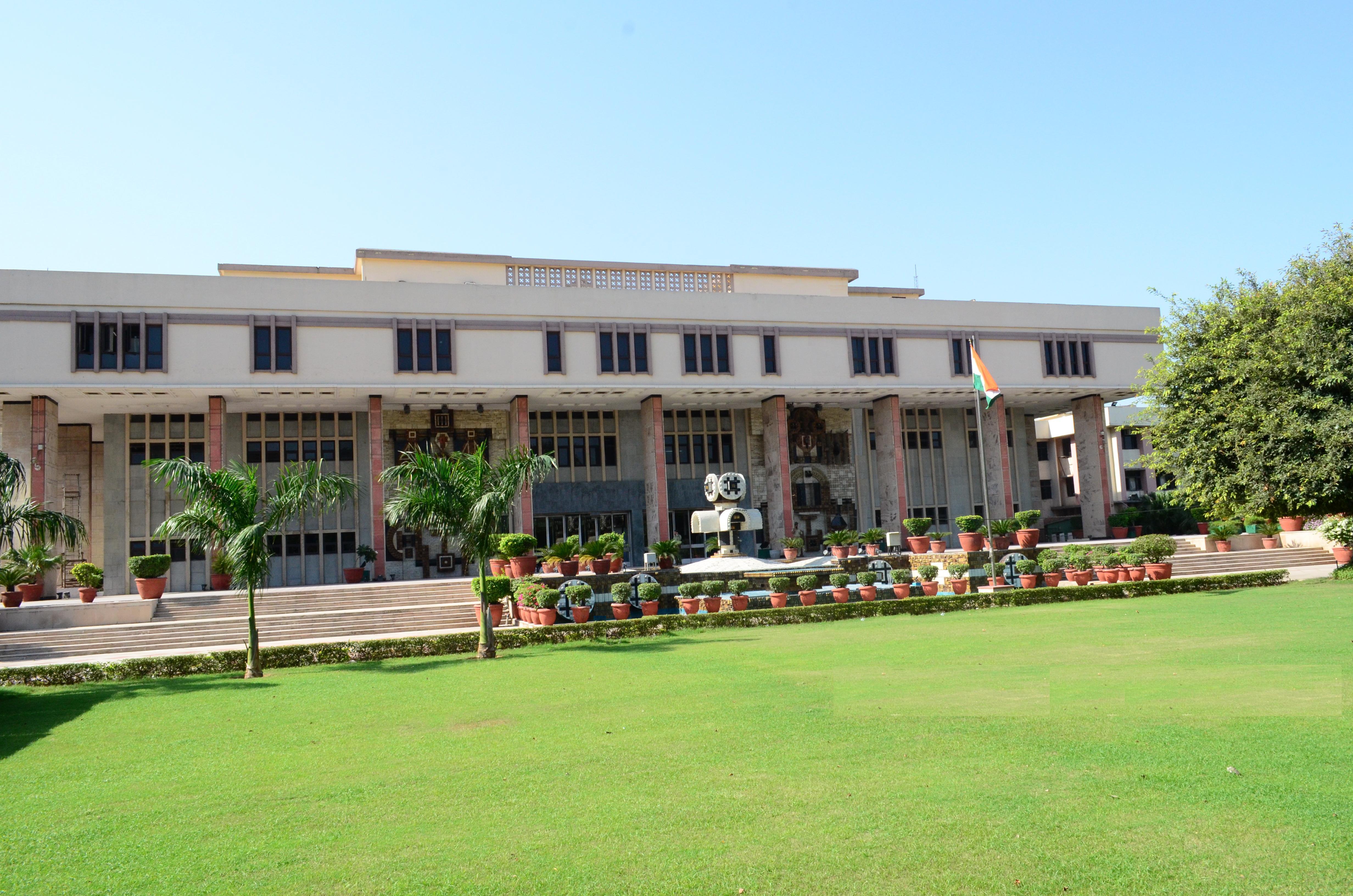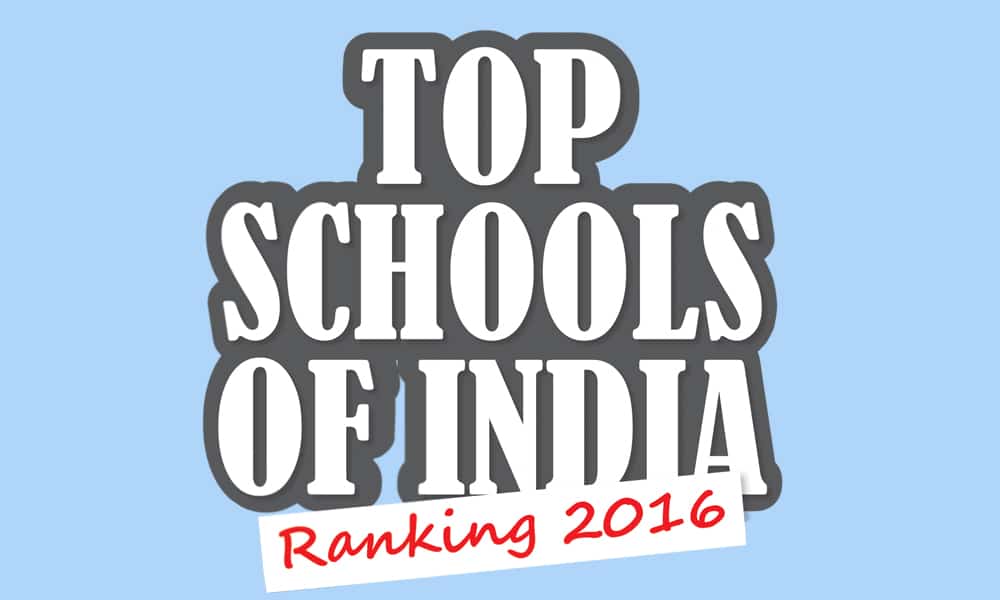
Ranking Parameter: Goodwill and Legacy
Schools have traditionally been viewed as places where one gets the opportunity to obtain education. But these places play much bigger role than usually assumed or believed. The impression that a school is actually a home away from home is based on the fact that there is much more that a kid learns while being nurtured at schools than just learning about the academic syllabus.
Be it imparting skills or developing the right aptitude for learning, exploring progressive thinking in life, much more depends upon the school we send our beloved children to. In brief, a good school has to have diverse and compelling ways to measure of success.
So, while evaluating the top schools of India, some of the parameters that digitalLearning magazine adhered to included Goodwill and Legacy
Goodwill and Legacy
With societal expectations and careerrelated challenges witnessing an unprecedented high, almost any parent wants to first know what has been the legacy of any school and what is its present goodwill?
How a school is going to take care of our wards is also influenced by the culture and system that has dominated the place of education over the years. And, obviously it is bound to be any concerned parent’s prime concern.
Apart from academic information and skills, a good school also aims to serve a number of purposes from building confidence to inculcating a habit of believing in team work and achieving big success in coordination with others. We, at Digital Learning magazine, considered five criteria under Goodwill and Legacy parameter for acquiring detailed information of a school before ranking it. The criteria were as follows:
School Environment
Effective schools have a warm environment. Students feel welcomed and know that the staff cares about them.
Unbiased Environment
A good school is disruptive of bad cultural practices. These include intolerance based on race, income, faith, gender and apathy towards the environment.
Safe and Secure Environment
With a number of incidents being reportedly occurring in schools off and on, how secure a school is for a child makes a difference. It is important to consider what kind of security or safety standards are being complied with to keep child abusers at bay or how foolproof the school is from security perspective for the children from not just outsiders but their peers and internal staff as well. Thus, it’s crucial how seriously a school considers this aspect and what kind of measures are in place.
Effective Discipline
Discipline is viewed by many as the base of entire educational journey. Be it any sphere of life, the approach to learn and implement is influenced by discipline. So how does a school inculcates such an important habit in its students or in what fashion it is taught or brutally imposed on students reflect the character of any school.
Alumni Feedback
How do alumni of any institution view the school? What kind of reviews they feel like offering about that edifice where the new students should or shouldn’t spend their years to come? All this matters a lot while evaluating a school. So, alumni relations or engagement should be considered by every school. A good alumni network could prove to be the best source to get a detailed report of the reputation of the school.
 Ranking Parameter: Learning Experience
Ranking Parameter: Learning Experience
In the present time, how wellthought out and updated methodologies a school abides by can make or mar the success of any student’s learning experience. And, teaching strategy is one of the most vital aspects of that. It can enable students learn the right thing, the best way for the finest possible objective and achieve all this in a wellplanned way.
Assessment of the learning capabilities of students is a key pillar in the development of a successful teaching strategy. For benefitting the students and making them future ready, education sector is undergoing a paradigm shift from Traditional Teaching Method to Innovative Learning Process.
Traditional Teaching: The Chalk-and-Talk Method
In the pre-technology education era, the teacher was the sender or the source, the educational material was the information or message, and the student played the role of receiver of the information. In the delivery medium, the educator can deliver the message via the “chalk-and- talk” and overhead projector (OHP) methodologies.
Innovative Learning Process: The new-age learning
Confucious, the Chinese philosopher, teacher and political figure widely known for his popular aphorisms and models of social interaction, used to say: “I hear and I forget, I see and I believe, and I do and I understand.”
In the similar fashion, multimedia is the combination of various digital media types such as text, images, audio and video, integrated into an multi-sensory interactive application or presentation to convey information to an audience.
Why “Learning Experience” is a parameter for ranking Top Schools of India – 2016?
Traditional educational approaches have led to a mismatch between what is taught to the students and what the industry needs. As such, many institutions are moving towards problem- based learning as a solution to producing graduates who are creative, critically thinking, and analytically attempt to address problems or challenges.
The Digital Learning magazine considered “Learning Experience” as one of the parameters for its Top Schools of India-2016 ranking because the cognitive experience of a student should be fun and thrill rather than become a monotonous experience.
 Ranking Parameter: Academic Excellence
Ranking Parameter: Academic Excellence
Though academic excellence is pivotal in laying the foundation of learning, it is also integral to the holistic development of mind and personality. Since the society is going through a transition, to make the students futureready, academic excellence cannot be replaced by anything. It requires to be supplemented with needs of ensuring holistic education and development.
What’s Holistic Education?
Holistic education is a methodological paradigm shift which focuses on preparing students to meet any real life challenges. The most important theories behind holistic education are learning about oneself, developing healthy relationships and positive social behaviour, social and emotional development, resilience, and the ability to view beauty, experience transcendence, and truth.
Digital Learning magazine’s Top Schools of India – 2016 ranking included academic excellence as a parameter to acknowledge the efforts of Schools which adopt the best practices for overall development of their students.
Why “Academic excellence” was chosen as a parameter for ranking Top Schools of India – 2016? Keeping academic excellence in mind, it is important that schools should also lay emphasis on complete development of a child which comes only through holistic education.
 Career Advancement
Career Advancement
Of the various parameters employed while ascertaining the ranking of schools in India, we believe ‘Career Advancement’ has been one of the most significant of all.
With career prospects remaining the chief concern of both — parents and students — this parameter to evaluate any educational edifice has gained currency in general. Hence, it was evaluated what career advancement courses the schools offer to help students in the initial stage of their career.
Digital Learning has used ‘Career Advancement’ as one of the parameters to rank the schools.
Schools provide students careerrelated research and advance courses so that they manage to develop an effective and result-oriented job search strategy, build a professional network, and market themselves in best possible fashion during interviews, drew a higher score in ranking.
Career advancement courses, as we all know, are actually undertaken to consolidate one’s career prospects and ensure a bright future, empowering students and alumni to translate their academic success into professional success. Through industry-specific training, global networking connections and apprising about relevant opportunities to put a world-class education into practice, these courses enable students to embark upon a journey of success without much hassle or struggle.
Whether students require short-term or summer internships, or wish to build a lifelong career in a stream, career advancement courses help students in realising their dreams of professional world.
Career advancement also covers career counselling that schools provide to their students. Career guidance and counselling programmes aim to help students make more informed and better educational and career choices.
Among other things, these programmes offer information on high school courses offering various career options, the type of academic and occupational training needed to succeed in the workplace and opportunities that are linked to their field of interest. Such programmes also provide teachers, administrators, and parents with information to support students in career exploration.
 Future Ready Infrastructure
Future Ready Infrastructure
While evaluating how one school holds edge over others in the industry, one of the yardsticks we evaluated it through was ‘Future Ready Infrastructure’.
But what defines Future Ready Infrastructure or Schools can be gauged from components such as Curriculum, Instruction, and Assessment, Personalised Professional Learning and Robust Infrastructure.
Curriculum, Instruction, and Assessment: The more the digitisation of the curriculum, higher will be the ranking of school.
We noticed that the digitisation has turned classrooms more interactive and participative than they once used to be about a decade or two ago. Today, a lot of school teachers can teach students with ease by showing 3D models availing the benefits of digitisation. They can ensure imparting of education is effective and cohesive than letting things remain cumbersome for students through handdrawn diagrammes on the blackboard.
Introduction of digitisation has definitely made process of education more simplified and interesting to draw maximum attention than it used to be once. Furthermore, it has proved helpful in promoting higher education.
Personalised Professional Learning:
Schools imparting professional training to their students are ranked higher. To prepare students for future jobs, it is necessary that they are trained as per the job oriented curriculum.
Robust Infrastructure: When employed as part of a comprehensive educational strategy, the effective use of technology provides tools, resources, data, and supportive systems that improve teaching methodologies and promote efficiency. High quality, high speed technology and infrastructure system within a school are essential to the advancing of digital learning and hence the ranking in the Top schools of India.
 Online Presence
Online Presence
With almost every sphere of technology being influenced or linked to the web world, every institution’s online presence has acquired immense significance. Hence, making it possible to assess what makes a school important in the eyes of its visitors or prospective clients, the schools’ websites have acquired immense significance.
Since almost all parents wish to know what kind of school their wards should be sent to and why they should zero-in on any particular school than the others, they wish to be informed about everything in black and white instead of relying on hearsay.
They wish to know about the school’s culture, mission and priorities?
How much importance does it offer to foreign or regional languages? What is the medium of learning? What sort of extra curricular activities are encouraged in the school and much more. Overall, this sort of information is accessed to know before hand how a child is going to benefit in term of overall personality development, as all this paves way for the holistic development of children in future.
Since it is quite difficult to know by parents from any official of the school or gain access to parents whose children are already studying there, it is the school’s website that can serve this purpose.
The school website answers all these questions at one platform. A good website can quickly influence whether the parent of a prospective student seeks more information about the school.
We used Moz, an online tool which ranks schools according to their online presence.
For a good school website, the following features were kept in mind:
‘Useful’ Homepage
Homepage is expected as much useful and friendly to handle that it motivates visitors to click on every icon without getting bored from any of the icons available to click on the website. It shouldn’t involve too much scrolling.
We observed if the homepage of any school was appealing and informative enough for students or parents and if it engages the read on or leads to closing the website down in no time, feeling little educated or informed about the school. We did take a note if the homepage was too crammed with useless or avoidable information on it.
Responsive Design
Since responsive design (i.e. mobile friendly) is a crucial element of a school website design. We noticed if it prompts easy access by a wide variety of mobile devices. A good responsive design is supposed to assure each webpage is readable and usable on a desktop computer, a laptop, a tablet or a smartphone. It automatically resizes and reformats pages to eliminate that annoying and time-consuming zooming and dragging that serve as barriers to the viewer.
A school website that incorporates responsive design can be shared and viewed through e-mail links, or social media sites like Twitter and Facebook, which more than half of users now access through mobile applications.
Social Media Integration Social media is a must for any school looking to create stronger connections with the community. A well-designed school website should have all its social media icons in the top navigation of the website. That’s where people look for them.
In addition, website should be easy to share. Social media ‘sharing’ buttons should be placed on all news, calendar, blogs, video and other shareable content. This is critical to spreading the word and promoting the school website as a valuable source of useful content. These design tips not only make the website look nice, but assure that its most important function is carried out: effective communication.
 Ranking Parameter: Social Footprints
Ranking Parameter: Social Footprints
The popular platform of connecting and popularising one’s update of life events is being used to reach the top in popularity charts in following ways:
Connectivity: Social media helps to develop networks of students and teachers. Students can also use these platforms to connect with various educational institutes as these institutes constantly communicate through social media channels promoting and sharing relevant information from student point of view. Online presence of any school helps it to strengthen connectivity without any limitations on proximity.
Community Building: It is a great way to reach out to potential students and professionals. It gives a chance to network with different industry experts and faculty of different institutions, social media can provide a better industry exposure.
Stimulate Knowledge and discussion: With the help of various social media channels, there is constant sharing of information, educational content at rapid rate by the schools. Educational content shared by educational institutions include views and opinions of faculties, new updates in the education sector and knowledge on various topics. Other than this these platform may help the institutions in assessing, analysing, retaining and sharing the information on a widespread.
Parental Involvement: In order to engage parents and encouraging them for their involvement, social media networks prove to be valuable tool for education institutes. The online presence of educational institutes through social media help the parents in accessing institute’s curriculum and knowing the teachers better. This helps them get clarity about the educational institute.
Visibility Advantage: According to IMAI (Internet and Mobile association of India), 65% of the population go online to search educational content.
Thus, institutes with more online or social visibility have an advantage of being more accessible by the student. Having an online presence often contribute towards a positive approach for the institute.
The below facts are self-explanatory about how social media is taking off in the 21st century. Today, social media is not only a medium to stay connected with friends and family but various social media channels are the ways for professional learning and researching.
- Facebook added over 200 million users in less than a year
- iPod application downloads hit 1 billion in 9 months
- 80 percent of companies use social media for requirement
- YouTube is the second largest search engine of the world
- India has 22.2 million Twitter uers in 2015. n
 Kalorex, a professionally managed autonomous institution, is focussing its activities on K-21 education since its inception. The group believes in empowering children to succeed in all spheres of life. Currently with 40+ schools and growing, Kalorex follows a cradle to career approach- addressing need of all segments of educational domain.
Kalorex, a professionally managed autonomous institution, is focussing its activities on K-21 education since its inception. The group believes in empowering children to succeed in all spheres of life. Currently with 40+ schools and growing, Kalorex follows a cradle to career approach- addressing need of all segments of educational domain. Kalorex believes in developing Glocal learners and nurturing them as better human being. The word ‘Glocal’ refers to global citizen with local adoption. At Kalorex, each and every child is equipped with 21st century learning skills along with financial literacy, linguistic competencies, digital literacy, media literacy, life skills and self learning skills along with values and traditions of the countries that it operates in. This enables every child to become an asset for the country.
Kalorex believes in developing Glocal learners and nurturing them as better human being. The word ‘Glocal’ refers to global citizen with local adoption. At Kalorex, each and every child is equipped with 21st century learning skills along with financial literacy, linguistic competencies, digital literacy, media literacy, life skills and self learning skills along with values and traditions of the countries that it operates in. This enables every child to become an asset for the country.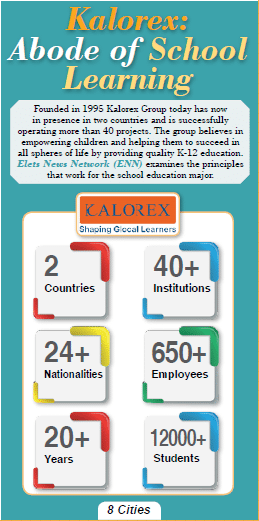 The objective of shaping Glocal Learners is embedded into the DNA and ethos of more than 650+ employees who are dedicated to the cause of Kalorex.
The objective of shaping Glocal Learners is embedded into the DNA and ethos of more than 650+ employees who are dedicated to the cause of Kalorex.